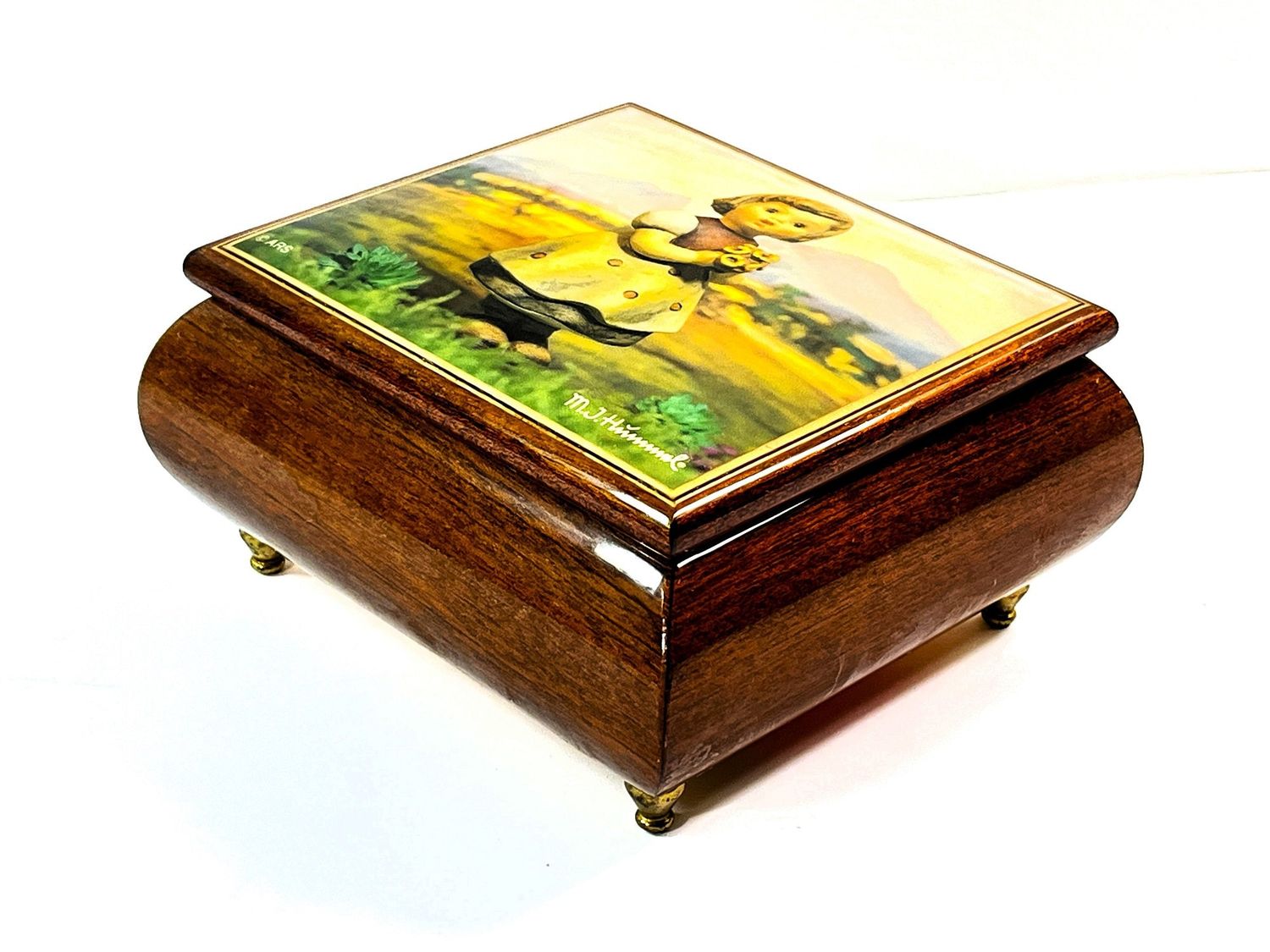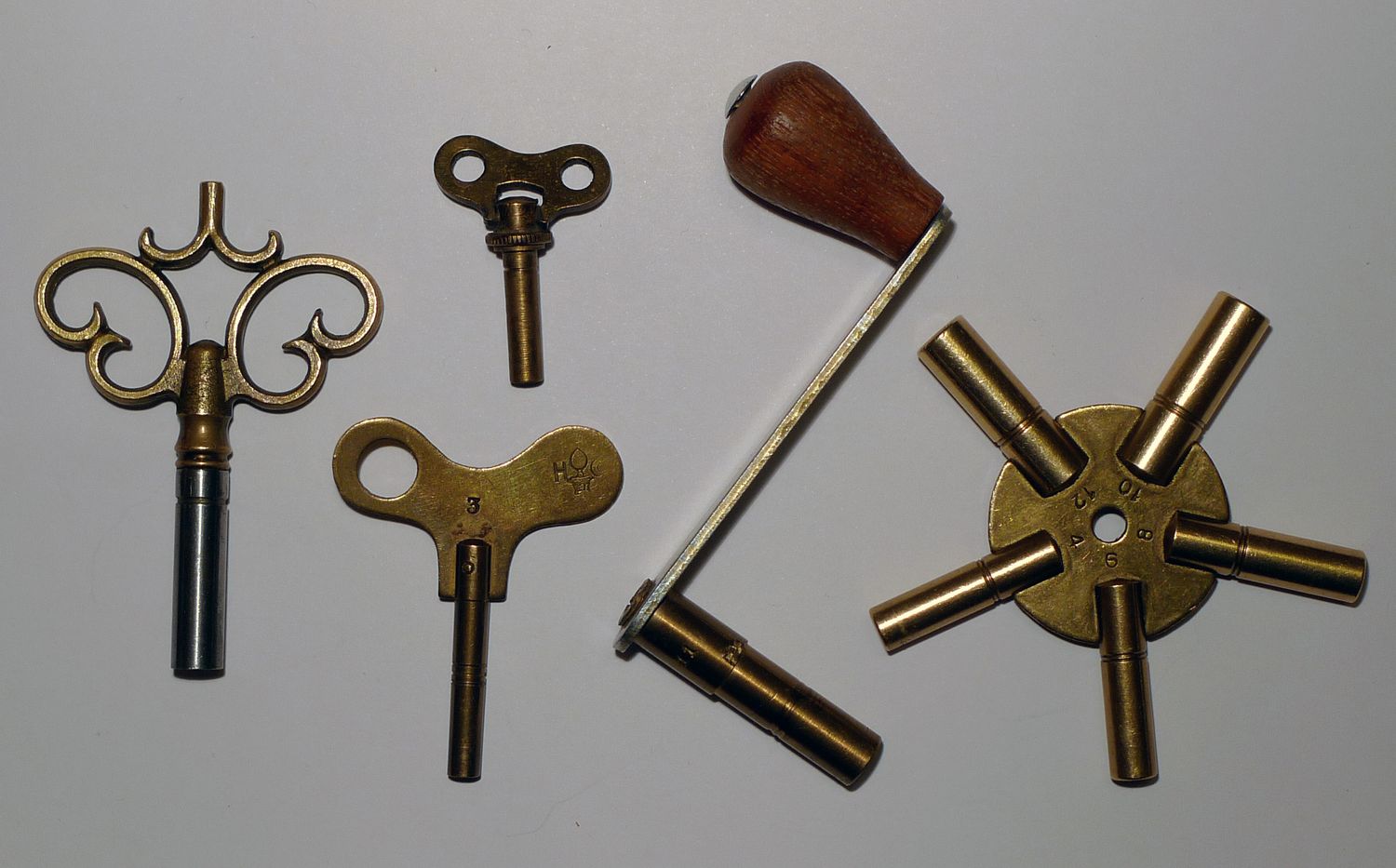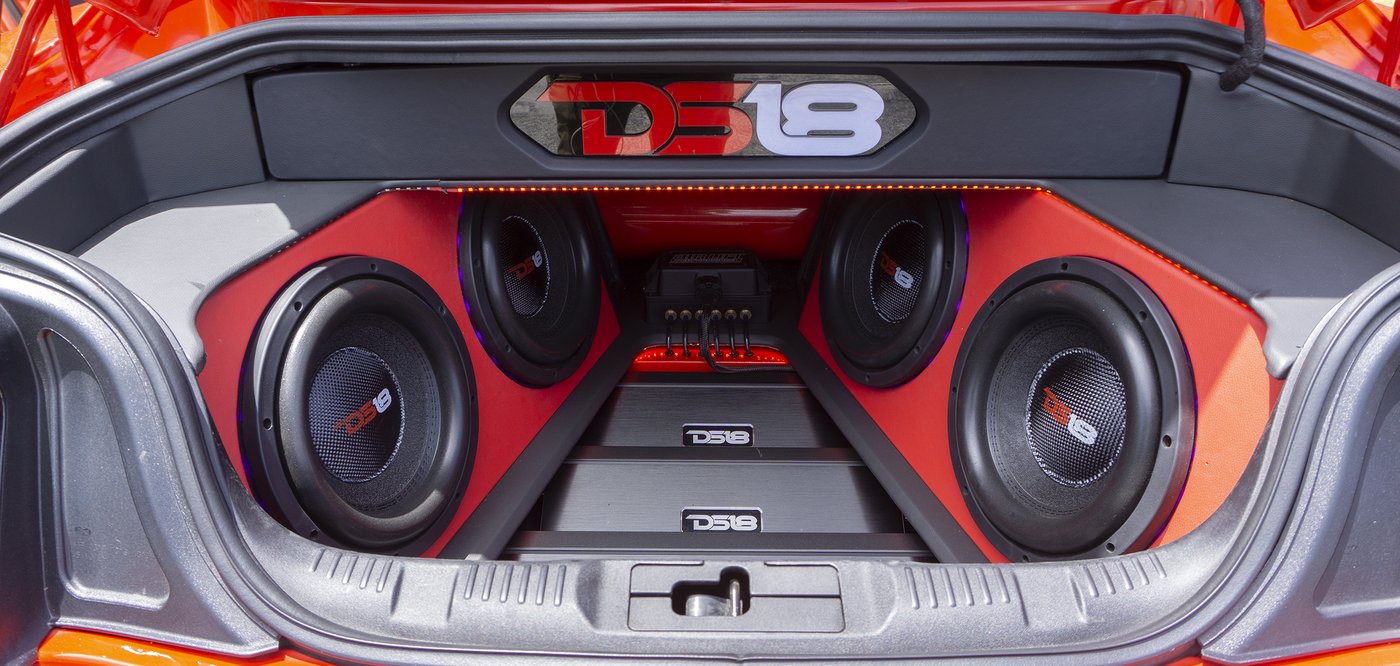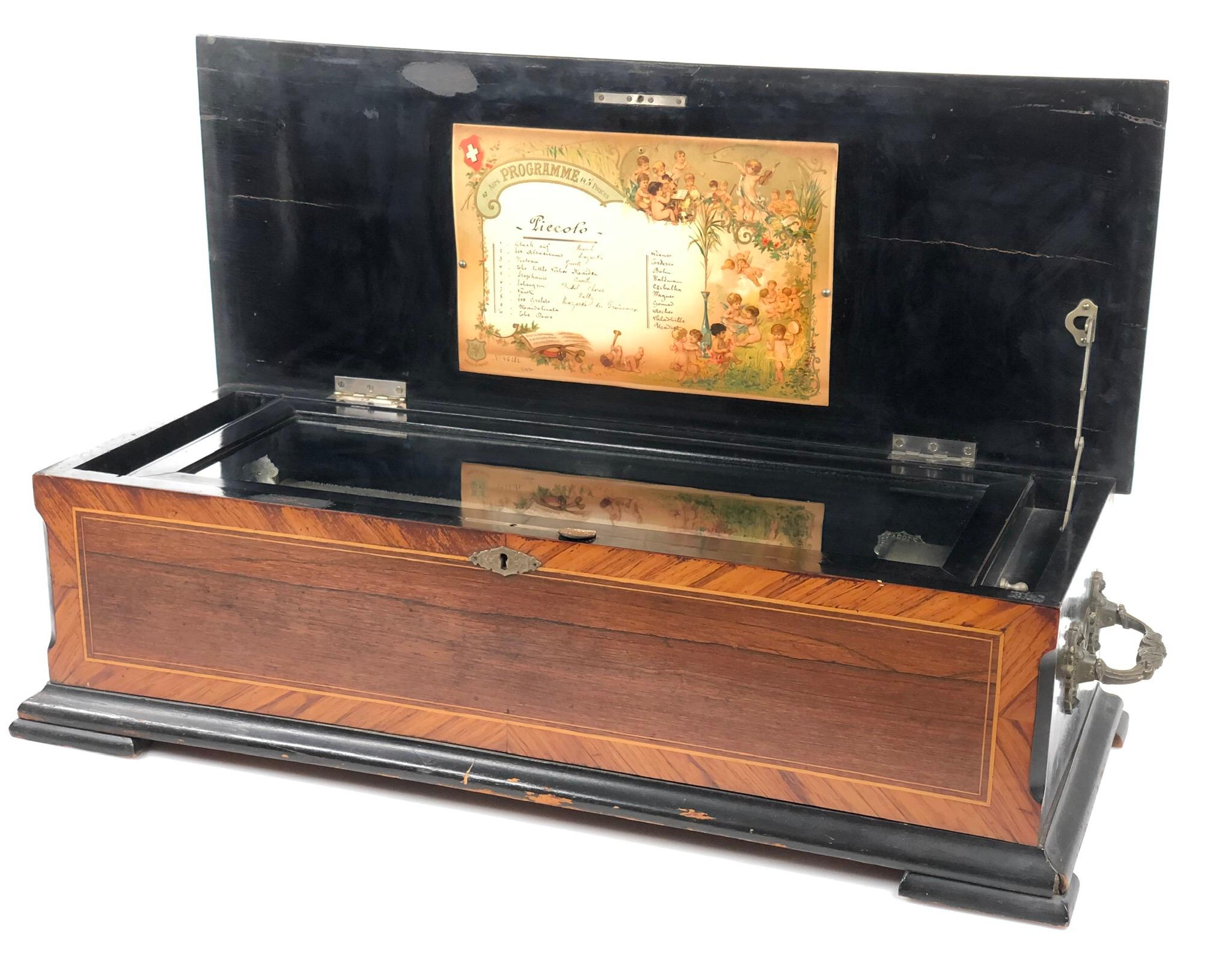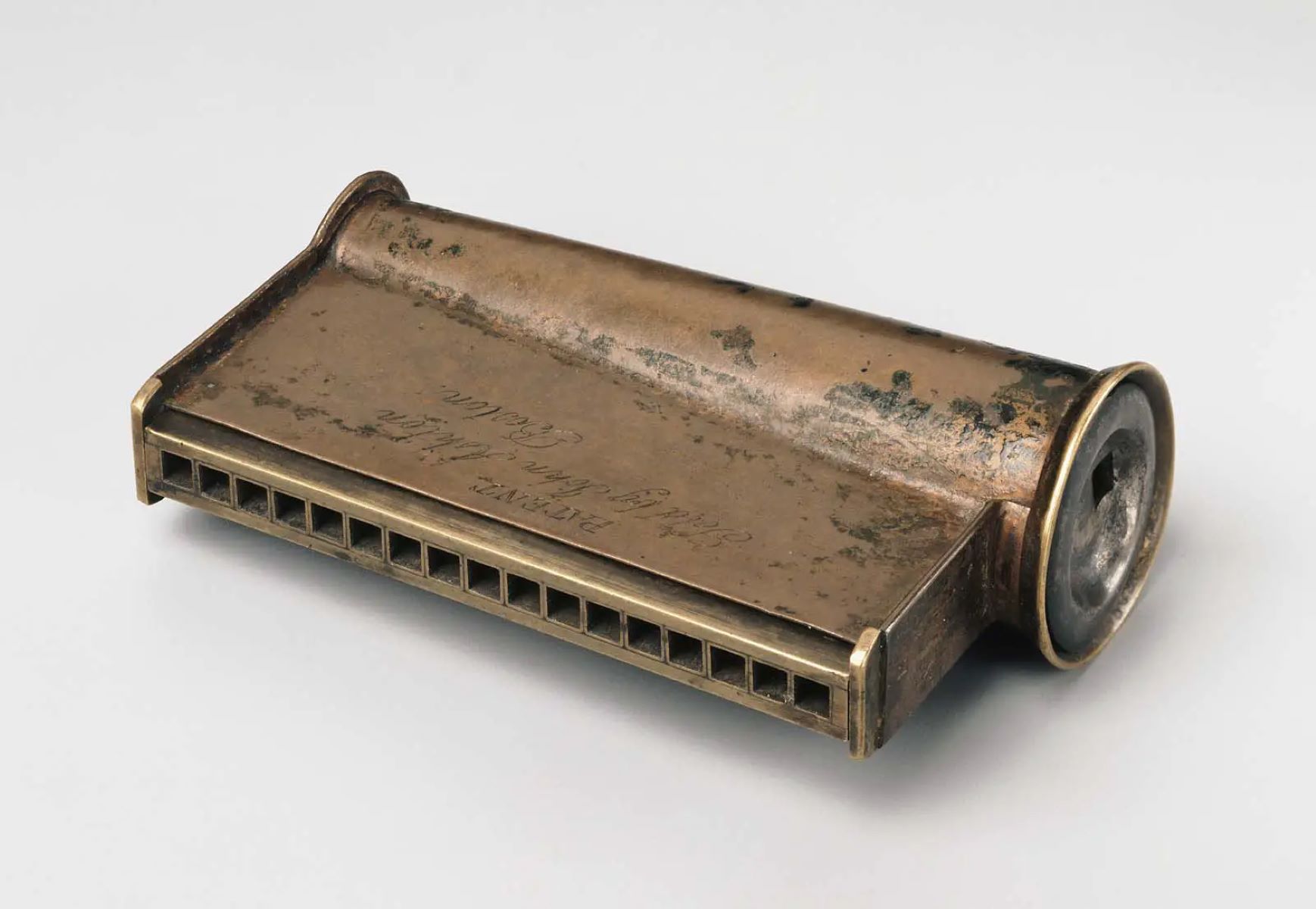Home>Devices & Equipment>Music Box>How To Get A Custom Made Music Box


Music Box
How To Get A Custom Made Music Box
Modified: January 22, 2024
Discover the perfect music box for your unique taste with our guide on how to get a custom-made music box. Explore our wide selection of personalized options and create a harmonious keepsake.
(Many of the links in this article redirect to a specific reviewed product. Your purchase of these products through affiliate links helps to generate commission for AudioLover.com, at no extra cost. Learn more)
Table of Contents
- Introduction
- Understanding Music Boxes
- Finding a Custom Music Box Maker
- Deciding on the Design and Features
- Providing Measurements and Customization Details
- Choosing the Melody and Musical Mechanism
- Reviewing and Approving the Design
- Placing the Order and Payment
- Tracking the Production Process
- Receiving and Inspecting the Custom Music Box
- Caring for and Enjoying Your Custom Music Box
- Conclusion
Introduction
Music boxes have captivated people for centuries, evoking a sense of nostalgia and enchantment with their delicate melodies and intricate designs. While there are countless choices available in the market, sometimes you want something truly unique and personal. That’s where custom-made music boxes come into play.
A custom-made music box is a one-of-a-kind piece that allows you to bring your imagination to life. Whether you have a specific theme in mind or want to commemorate a special occasion, such as a wedding or anniversary, a custom music box can serve as a cherished keepsake or a thoughtful gift.
In this article, we will guide you through the process of getting a custom-made music box. From understanding the basics of music boxes to finding a reliable custom music box maker and finalizing your design, we will cover it all. So, let’s dive in and discover how to create your very own personalized music box that will resonate with you for years to come.
Understanding Music Boxes
Before diving into the process of getting a custom-made music box, it’s essential to have a basic understanding of how these enchanting instruments work. Music boxes, also known as musical boxes or musical jewelry boxes, are mechanical devices that produce sound through a series of metal pins or discs that pluck a comb of tuned teeth.
The comb is the heart of the music box, and the number, length, and arrangement of its teeth determine the notes and melodies it can play. When a cylinder or a disc with strategically placed pins rotates, the pins activate the teeth on the comb, producing a beautiful melodic tune.
Music boxes can vary greatly in size, from small handheld versions to large, ornate pieces meant for display. They can also come in various shapes and designs, from traditional rectangular boxes to whimsical shapes like animals or characters.
In addition to the musical mechanism, music boxes often feature a compartment where you can store small trinkets or jewelry. This makes them not only a delightful musical instrument but also a functional and decorative item.
Understanding the inner workings of music boxes and their various components is crucial when communicating your custom music box ideas to the maker. It will help you make informed decisions about the design, melody, and overall customization possibilities.
Now that you have a better understanding of music boxes, let’s move on to the next step: finding a custom music box maker who can bring your vision to life.
Finding a Custom Music Box Maker
When it comes to getting a custom-made music box, finding the right maker is crucial to ensure a high-quality and personalized result. Here are some tips to help you find a reliable custom music box maker:
- Research online: Start by doing a thorough online search for custom music box makers. Look for reputable websites, forums, and online marketplaces that specialize in custom crafts and handmade items. Pay attention to customer reviews and ratings to get an idea of the maker’s reputation.
- Check portfolios and previous work: Take the time to explore the maker’s portfolio or gallery of previous works. This will give you an idea of their style and craftsmanship. Look for attention to detail, unique designs, and a diverse range of customized music boxes.
- Ask for recommendations: Reach out to friends, family, or fellow music box enthusiasts who may have had custom music boxes made. Ask for their recommendations and personal experiences with different makers.
- Contact the maker: Once you have narrowed down your options, get in touch with the custom music box makers. Ask about their process, pricing, and customization options. A responsive and communicative maker is a good sign of their professionalism.
- Consider their specialization: Some custom music box makers may specialize in certain themes or styles. If you have a specific idea in mind, look for a maker who has experience and expertise in that area. This will ensure that they fully understand your vision and can execute it flawlessly.
Remember, finding the right custom music box maker is essential to ensure that your vision is translated into a beautiful and unique piece of art. Take your time in researching and selecting a maker who aligns with your expectations and can create the custom music box of your dreams.
Once you have found a suitable maker, it’s time to move on to the next step: deciding on the design and features of your custom music box.
Deciding on the Design and Features
When it comes to designing your custom music box, the possibilities are endless. You have the opportunity to create a piece that reflects your personal style, interests, and memories. Here are some factors to consider when deciding on the design and features of your custom music box:
- Theme or Inspiration: Think about the theme or inspiration for your music box. It could be a favorite hobby, a special place, a memorable event, or anything that holds significance to you. This theme will guide the overall design and aesthetics of the music box.
- Material: Consider the material options for your custom music box. Common choices include wood, metal, glass, or a combination of materials. Each material has its own unique characteristics and can contribute to the overall look and feel of the music box.
- Size and Shape: Determine the size and shape of your music box. Consider where you plan to display it or how you intend to use it. Whether you prefer a compact box that fits in the palm of your hand or a larger statement piece, the size and shape will dictate the overall proportions and visual impact of the music box.
- Personalization: Think about how you want to personalize your music box. This could include engravings, custom artwork, or incorporating personal items or photographs into the design. Personalization adds a unique and sentimental touch to the music box.
- Additional Features: Consider any additional features you might want to include in your custom music box. This could range from compartments for storing small items to LED lights that illuminate the box. These extra features can enhance the functionality and aesthetic appeal of your music box.
Take your time to brainstorm ideas and gather inspiration from various sources such as music box catalogs, websites, or even art and design magazines. Create a mood board or sketch out your ideas to visually organize your thoughts and preferences.
Once you have a clear vision of the design and features you want, you are ready to discuss the details with your chosen custom music box maker. Communication is key during this process to ensure that your ideas are effectively conveyed and implemented.
Next, we will look at the important step of providing measurements and customization details to bring your custom music box design to life.
Providing Measurements and Customization Details
When it comes to creating a custom music box, precision is key. Providing accurate measurements and customization details to your chosen maker is crucial to ensure that the final product meets your expectations. Here are the steps to follow:
- Measurements: Start by measuring the dimensions of the music box you desire. Note the length, width, and height of the box, as well as any specific compartments or sections you want to include. Remember to consider the size of the musical mechanism and any additional features you plan to incorporate.
- Customization Details: Clearly communicate your customization details to the maker. This includes any engravings, custom artwork, or personal items you want to incorporate. Be specific about the design elements, such as the placement of engravings or the color scheme you envision.
- Discuss Options: Consult with your maker to explore the customization options available for your music box. They may have suggestions or insights based on their expertise and experience. Collaborating with them can lead to innovative ideas and unique touches that you may not have considered.
- Provide Visual References: If you have specific images or examples that represent your desired design or style, provide them to the maker. Visual references can help convey your vision more clearly and ensure that you and the maker are on the same page regarding the aesthetics of the custom music box.
- Ask for Samples or Mockups: Depending on the complexity of your design, you can request samples or mockups from the maker. This will give you a better understanding of how the final product will look and allow you to make any necessary adjustments or modifications before production begins.
Remember, clear and effective communication is crucial during this stage of the process. Be sure to ask questions, seek clarification when needed, and provide feedback to the maker. Their goal is to create a custom music box that aligns with your vision, so don’t hesitate to voice your preferences and expectations.
Once you have provided the measurements and customization details, it’s time to move forward with selecting the melody and musical mechanism for your custom music box.
Choosing the Melody and Musical Mechanism
When it comes to a music box, the melody is what truly brings it to life. Choosing the right melody and musical mechanism is an important part of the custom music box creation process. Here are some factors to consider:
- Melody Selection: Think about the melody you want your custom music box to play. It could be a favorite song, a classical tune, or a melody that holds sentimental value to you. Consider the mood and ambiance you want to create with the music box. Whether it’s soothing and relaxing or cheerful and uplifting, the melody will set the tone.
- Musical Mechanism: The musical mechanism is the engine that drives the music in a music box. There are different types of mechanisms available, including traditional wind-up mechanisms, hand-crank mechanisms, and even electronic mechanisms. Each has its own unique sound and operation, so consider which one best suits your preferences.
- Customization: Some custom music box makers offer the option to customize the melody or even compose an original tune for your music box. If you have a specific melody in mind that is not readily available, discuss this with the maker to see if they can accommodate your request.
- Sound Quality: Pay attention to the sound quality of the musical mechanism. A well-crafted music box should produce a clear and resonant sound. If possible, listen to samples or demonstrations of the musical mechanism to ensure that it meets your expectations.
Communicate your melody and musical mechanism preferences to your custom music box maker. Share any specific songs or tunes you have in mind, and they can guide you through the options available. Some makers may have a catalogue of popular melodies to choose from, while others may offer more customization options.
Keep in mind that the musical mechanism can affect the overall price of your custom music box, so discuss the cost implications with the maker as well. Once you have finalized the melody and musical mechanism, you can move forward to the next step: reviewing and approving the design of your custom music box.
Reviewing and Approving the Design
After providing the measurements, customization details, and selecting the melody and musical mechanism, the next step in creating your custom music box is reviewing and approving the design. This is a crucial stage where you get to see your vision come to life and make any necessary adjustments. Here’s what you need to know:
Once the custom music box maker has gathered all the necessary information and requirements, they will create a design that incorporates your ideas and specifications. They may provide you with sketches, 3D renderings, or computer-generated images to give you a visual representation of the final product.
Take the time to carefully review the design and consider the following aspects:
- Aesthetics: Evaluate the overall aesthetics of the design. Does it match your original vision? Does it capture the desired theme, style, and mood? Pay attention to the materials, colors, and details incorporated into the design.
- Functionality: Assess the functionality of the music box. Ensure that all the requested features, such as compartments, custom artwork, or engravings, are accurately depicted in the design. Additionally, check if the size and shape of the music box align with your expectations and intended usage.
- Accuracy: Carefully compare the design with the measurements and customization details you provided. Check if all the specifications have been accurately translated into the design. Look for any discrepancies or modifications that may need to be addressed.
- Approval or Modifications: Based on your review, you can either approve the design or request modifications. If you are satisfied with the design, you can give your approval for the maker to proceed with the production. If you have any concerns or changes you would like to make, communicate them to the maker for further adjustments.
Effective communication with the custom music box maker is key during this stage. Clearly convey your thoughts, suggestions, or concerns regarding the design. The maker’s goal is to ensure that you are delighted with the final result, so they will work closely with you to address any modifications needed.
Remember, the design approval is an important milestone in the creation of your custom music box, as it sets the stage for the actual production. Once you have reviewed and approved the design, you can move forward with placing the order and discussing the payment details.
Placing the Order and Payment
After reviewing and approving the design of your custom music box, the next step is to place the order and discuss the payment details with the maker. Here’s what you need to know about this process:
1. Order Confirmation: Once you have given your final approval for the design, the maker will confirm the order details with you. This will include the finalized design, materials to be used, customization options, and any additional features discussed. Ensure that all the specifications are accurately reflected in the order confirmation.
2. Price Quotation: The maker will provide you with a price quotation for your custom music box based on the agreed-upon design and specifications. This will typically include the cost of materials, labor, customization, and shipping, if applicable. Take the time to review the quotation and make sure you understand the total cost.
3. Payment Terms: Discuss the payment terms with the maker. They may require a deposit upfront or full payment before production begins. Clarify the accepted payment methods and any applicable fees or taxes. It’s important to establish a clear understanding of the payment terms to avoid any misunderstandings or delays.
4. Production Timeline: Inquire about the estimated production timeline for your custom music box. Custom-made items often take time to handcraft, so be prepared for a waiting period. The maker should be able to provide you with an approximate timeframe for completion and delivery.
5. Security and Legal Agreement: If necessary, discuss any security measures or confidentiality agreements with the maker. This is especially important if you are providing personal or sensitive information for customization purposes. Ensure that there are clear guidelines to protect your privacy and intellectual property rights.
6. Order Confirmation and Payment: Once all the details have been discussed and agreed upon, it’s time to confirm your order and make the payment according to the agreed terms. The maker may require you to sign a formal order confirmation agreement, which serves as a binding contract between you and the maker. Proceed with the payment using the agreed-upon method.
7. Communication and Updates: Maintain open lines of communication with the maker throughout the production process. Regular updates on the progress of your custom music box will help you stay informed and alleviate any concerns. This ensures a smooth and transparent experience from placement to delivery.
By following these steps and maintaining clear communication, you can confidently place your order and proceed with the payment for your custom music box. With the order placed, you can now look forward to the production and eventual delivery of your personalized creation.
Tracking the Production Process
Once you have placed your order for a custom-made music box, it’s natural to be curious about the progress of its production. Tracking the production process allows you to stay informed and ensures transparency. Here are some steps to help you track the production process:
1. Communication with the Maker: Maintain regular communication with the custom music box maker to keep updated on the progress. Establish a preferred mode of communication, whether it’s through email, phone calls, or a project management platform. This will ensure that you receive timely updates and can address any concerns or questions that may arise.
2. Production Timeline: Refer back to the estimated production timeline provided by the maker. While it’s important to allow for some flexibility due to the handmade nature of custom products, having an estimated timeframe will give you an idea of when the music box is likely to be completed. If there are any unexpected delays or changes, the maker should inform you promptly.
3. Milestone Updates: Request milestone updates from the maker. They may be able to provide updates at key stages of the production process, such as when the wooden structure is completed, when the musical mechanism is added, or when the final touches are being made. These milestone updates give you a clearer picture of the progress being made on your custom music box.
4. Visual Documentation: Ask the maker if they can provide visual documentation of the production process. This could include photos or videos that showcase the different stages of creating your music box. Visual documentation not only allows you to see the craftsmanship involved but also provides reassurance that your custom music box is being crafted with care and attention to detail.
5. Quality Control and Inspection: The maker should perform quality control checks throughout the production process. They should ensure that the music box meets the agreed-upon design, specifications, and quality standards. Depending on the complexity of the design, you may ask for additional photos or videos of the final product before it is shipped to you.
6. Open Communication: If at any point during the production process you have questions, concerns, or need clarification, don’t hesitate to reach out to the maker. Maintaining open and transparent communication is essential to ensure that your expectations are met and that any issues can be addressed promptly.
By actively tracking the production process and maintaining communication with the maker, you can stay informed and have peace of mind knowing that your custom music box is being created to your specifications. With regular updates, you can eagerly anticipate the arrival of your personalized music box.
Receiving and Inspecting the Custom Music Box
The moment has arrived – your custom music box is ready for delivery. When you receive your long-awaited treasure, it’s important to take the time to inspect it and ensure that it meets your expectations. Here are some steps to help you with the receiving and inspection process:
1. Packaging and Delivery: Carefully examine the packaging upon receipt. Look for any signs of damage or mishandling during shipping. If you notice any external damage to the package, document it with photographs before opening.
2. Unboxing: Take care when unboxing your custom music box. Remove any protective materials and unwrap it gently. Pay attention to any specific instructions provided by the maker for safely unpacking the item.
3. Visual Inspection: Begin by visually inspecting the music box. Check for any visible flaws, scratches, or dents on the exterior. Examine the craftsmanship and attention to detail. Ensure that the design elements, engravings, or personalizations are as agreed upon. Compare the physical item with the original design or visual references you provided.
4. Functionality Test: Test the functionality of the music box. Wind it up or activate the mechanism according to the maker’s instructions. Listen to the melody and ensure that it plays smoothly and without any interruptions. Pay attention to the sound quality and volume. Test any additional features or compartments to ensure they are functioning correctly.
5. Carefully Inspect the Details: Take a closer look at the finer details of the music box. Inspect the finish, joints, and connections. Evaluate the quality of the materials used. Open and close any compartments or lids to ensure they function smoothly. Address any concerns or issues with the maker promptly.
6. Documentation: Document any discrepancies, damages, or issues you observe during the inspection process. Take clear photographs and make notes of your observations. This documentation will be helpful if you need to contact the maker for repairs, replacements, or further discussions.
7. Contact the Maker: If you notice any significant issues or defects during the inspection, contact the maker as soon as possible. Provide them with the necessary documentation and detailed descriptions of the concerns. Most reputable makers will be willing to work with you to resolve any issues and ensure your satisfaction.
Remember, this inspection process ensures that any potential issues are addressed in a timely manner. By documenting and communicating your observations, you can work collaboratively with the maker to resolve any concerns and enjoy your custom music box to the fullest.
Caring for and Enjoying Your Custom Music Box
Now that you have received and inspected your custom music box, it’s time to learn how to care for and enjoy it. By following some simple guidelines, you can ensure that your cherished keepsake remains in great condition and brings joy for years to come. Here are some tips:
1. Handle with Care: Treat your custom music box with care and gentleness. Avoid dropping it or subjecting it to sudden impacts. This will prevent any potential damage to the delicate components and ensure its longevity.
2. Keep it Clean: Regularly clean your music box to keep it free from dust and dirt. Use a soft, lint-free cloth to gently wipe the exterior. Avoid using harsh chemicals or abrasive materials that could damage the finish or engravings.
3. Store in a Safe Place: When not in use, store your music box in a safe and dry place. Avoid exposing it to extreme temperatures, direct sunlight, or high humidity, as these conditions can adversely affect the materials and mechanisms.
4. Avoid Excessive Handling: While it’s tempting to play your music box frequently, excessive handling can cause wear and tear over time. Enjoy listening to the melodies, but refrain from continuously winding or activating the mechanism unnecessarily.
5. Regular Maintenance: Check the music box periodically for any loose screws or parts. If you notice anything loose or damaged, contact the maker for guidance on repairs or maintenance.
6. Avoid Moisture and Liquids: Protect your music box from any contact with liquids. Liquids can damage the mechanisms and cause them to rust or malfunction. Keep it away from water sources, humid environments, and areas prone to spills.
7. Display and Enjoy: Showcase your custom music box by displaying it in a prominent place where you can appreciate its beauty and enjoy the melodies. Whether it’s on a shelf, mantelpiece, or as a centerpiece on your table, positioning it where it can be seen and cherished adds to the overall experience.
8. Share the Joy: Share the joy of your custom music box with others. Let friends and family experience the beauty of the melodies and the craftsmanship. It can be a wonderful conversation piece and a source of joy for everyone around you.
By following these care guidelines, you can ensure that your custom music box remains in excellent condition and continues to bring a sense of enchantment to your life. Remember, your custom music box is a unique and treasured possession, so embrace the opportunity to enjoy it and create lasting memories with its melodies.
Conclusion
Getting a custom-made music box is a magical and rewarding experience that allows you to bring your creativity and personal touch to a cherished item. Throughout this article, we have explored the process of creating a custom music box, from understanding the basics of music boxes to finding a reliable maker, deciding on the design and features, providing measurements and customization details, choosing the melody and musical mechanism, reviewing and approving the design, placing the order and making the payment, tracking the production process, receiving and inspecting the final product, and caring for and enjoying your custom music box.
By following these steps and guidelines, you can navigate the journey of creating a custom music box with confidence and ensure that your vision is translated into a beautiful and personalized piece of art. Remember to communicate effectively with the maker, provide clear instructions and feedback, and stay engaged throughout the process.
A custom music box is not only a treasured item but also a reflection of your personality and the meaningful moments you hold dear. It can serve as a unique gift for a loved one or become a beloved heirloom that is passed down through generations. The melodies that emanate from its delicate mechanism carry memories and emotions, creating an everlasting connection.
So, embrace the enchantment of a custom music box and embark on the journey of creating a piece that is truly yours. Let the melodies transport you to a place of nostalgia and wonder, and enjoy the beauty and craftsmanship that went into bringing your imagination to life.
With your custom music box in hand, may it bring a symphony of joy and become a cherished keepsake that resonates with you for years to come.

